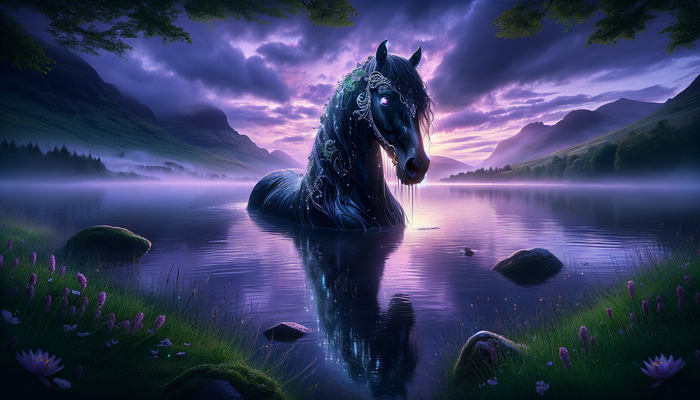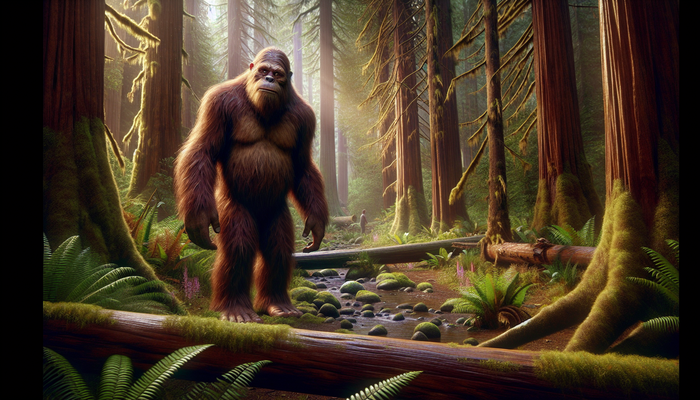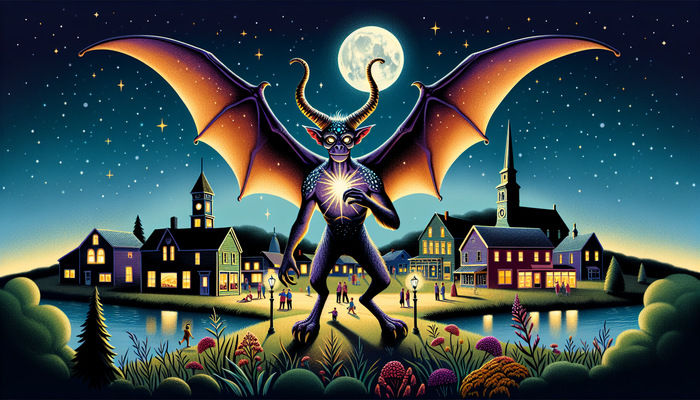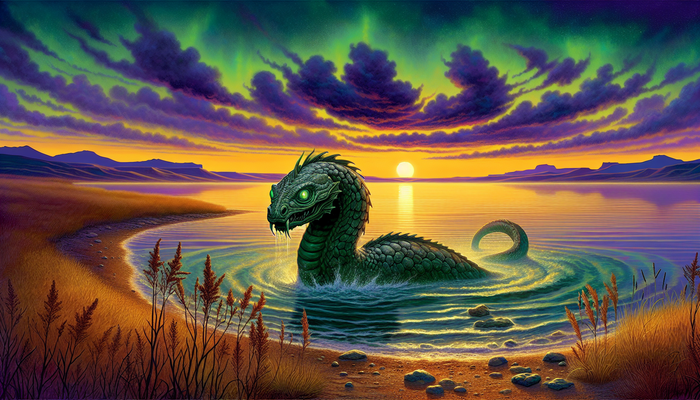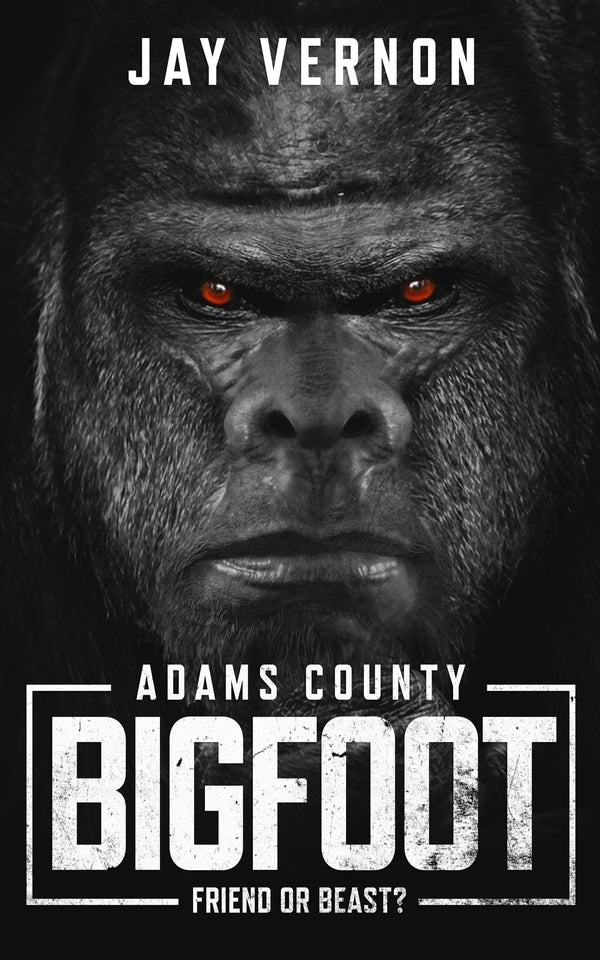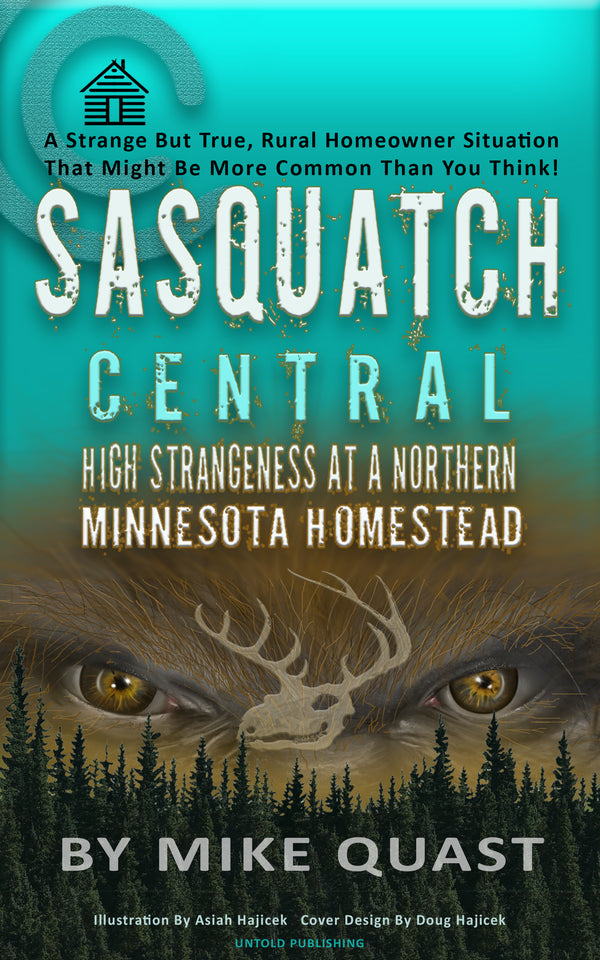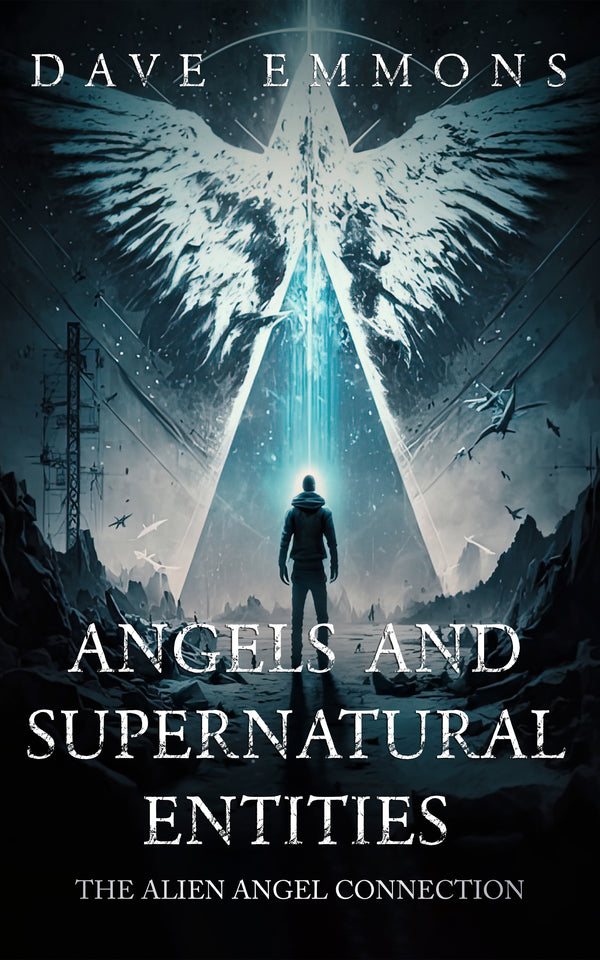The Crosley Monster in Indiana
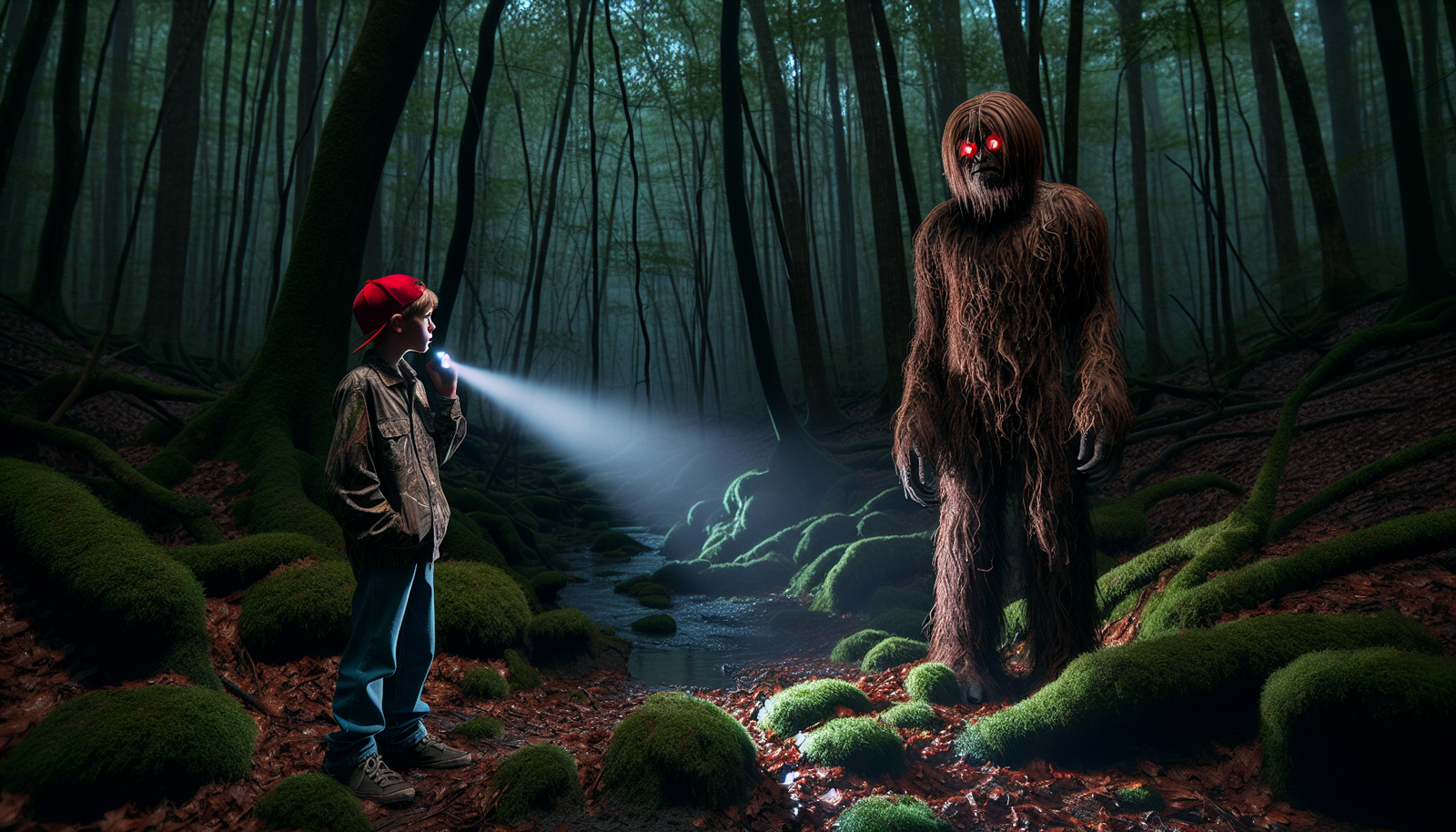
By Dr. Elizabeth Harper, Cryptozoologist and Biologist
Introduction
The mysterious Crosley Fish and Wildlife Area in Jennings County, Indiana
As I navigated the winding backroads of rural Jennings County, the dense forests and rolling hills exuded an aura of mystery. My destination was Crosley Fish and Wildlife Area, a sprawling 4,288-acre expanse encompassing woodlands, ponds, and the meandering Muscatatuck River. This remote wildlife refuge held the key to a legend that had captured my imagination for years - tales of a mysterious creature known as the Crosley Monster.
While legends of Bigfoot and other cryptids can be found across the United States, Indiana’s Crosley Monster holds a special distinction as the state’s own elusive inhabitant. The Crosley Fish and Wildlife Area, with its rugged terrain and abundant wilderness, seemed like the perfect environment to harbor such a creature. As a biologist and dedicated Bigfoot researcher, I was eager to learn more about this local legend on its home turf.
Indiana's unique Bigfoot variant
The Crosley Monster has been described as Indiana's version of Bigfoot, a bipedal, hairy creature estimated to stand seven to eight feet tall. While Bigfoot sightings occur nationwide, the Crosley Monster exhibits some unique characteristics that set it apart, including reports of unusually aggressive and even playful behaviors. As a cryptid researcher, I was fascinated by the Crosley Monster's status as a regional variant of the ubiquitous Bigfoot legend. Its distinction hinted that it may represent a relict population with genetic and behavioral differences, or possibly an entirely new species.
Brief overview of the legend's origins and resurgence in popularity
Tales of the Crosley Monster can be traced back decades, with the earliest rumored sightings occurring in the 1950s in the dense woodlands surrounding what is now the Crosley Fish and Wildlife Area. But it was not until 2006 that the legend gained traction in popular lore, when four teenage boys reported being chased by a large, bipedal creature with glowing red eyes while camping in the area. Their dramatic account put the Crosley Monster in the spotlight, inspiring renewed curiosity and speculation that continues to this day. For a legend that had long lingered at the fringe of local folklore, this sudden resurgence was about to thrust the Crosley Monster into the national cryptid conversation.
The Legend of the Crosley Monster
Tracing the roots back to the 1950s
As I dug into the history of the legend, I discovered scattered accounts dating back decades before the highly publicized 2006 encounter. A 1958 newspaper article hinted at a tall, hairy creature glimpsed by motorists near the Crosley area. In the 1970s and 80s, stories circulated among Jennings County residents of brief sightings and eerie noises heard in the forests at night. Though details were vague, a consistent thread linked the decades-old stories with the recent ones - descriptions of a large, bipedal, apelike entity that seemed to inhabit the wilderness near Crosley.
Prior to 2006, such accounts were infrequent and lacked the dramatic details that would capture public attention. But to me, the sporadic sightings hinted that this was no modern fabrication. For generations, some elusive creature had made its home in the region's dense forests, avoiding detection while kindling rumors in the local community.
A detailed account of the encounter by four boys
The 2006 sighting marked a pivotal moment, transforming the Crosley Monster from little more than a local legend into a figure of national intrigue. The detailed account from four teenage witnesses lent credibility and specificity that previous stories lacked. They reported seeing a large creature, at least seven feet tall, with matted hair covering its body and piercing, glowing red eyes. It emitted loud vocalizations and shook trees aggressively, as if threatened by the boys' presence.
Most remarkably, they claimed that when they fled, it dropped onto all fours and pursued them at a speed impossible for a human, even through densely vegetated terrain. The creature matched reports of the Crosley Monster in both appearance and behavior. The teens' evident terror and refusal to recant their story, despite ridicule from skeptics, convinced me that a genuine encounter had occurred. This was no simple case of mistaken identity or teenage mischief.
Bipedal, hairy, with glowing red eyes
The 2006 encounter provided the most complete description of the Crosley Monster to date. It reportedly stood approximately seven to eight feet tall, covered in shaggy, dirty-looking hair. Its eyes glowed red, reflecting light from the boys' flashlight. The creature was powerfully built, capable of shaking trees and knocking down foliage as it crashed through the forest. Its vocalizations were described as "howls" and "screams" much more disturbing than the sounds typical wildlife make. When seen upright, its proportions were distinctly humanoid, with two legs and two arms. However, it dropped to all fours to chase the fleeing witnesses, reaching speeds no human could match.
These characteristics aligned with my research into Bigfoot as an experienced cryptozoologist. However, reports of tree shaking and aggression were an anomaly for Bigfoot encounters. This unusual behavior suggested that the Crosley Monster was either a highly territorial relict hominid or an entirely new species with more primal tendencies. Either way, I knew this creature warranted serious scientific investigation.
Eyewitness Accounts and Encounters
Initial sighting and subsequent encounter while squirrel hunting
Of all the Crosley Monster eyewitnesses, one name stood out - Corey Mullikin. Then a teenager, he was part of the group that encountered the creature in 2006. A few weeks later, while squirrel hunting alone near the original sighting location, he claimed to have crossed paths with the beast again. This time, the creature circled him curiously, throwing leaves in what seemed to be an attempt to interact or play. Corey reported hearing vocalizations matching those from the first incident, confirming that this was the same creature.
Having two encounters with the monster solidified Corey as the preeminent eyewitness. His willingness to share his terrifying experiences despite ridicule demonstrated his sincerity. As a cryptozoologist, I make it a priority to speak directly with witnesses whenever possible. I hoped to arrange an interview with Corey to glean more insights into the Crosley Monster's ecology and behavior from someone who had seen it up close not just once, but twice.
Additional reports from locals and visitors
While Corey Mullikin's encounters remained the most detailed and well-documented, I uncovered other intriguing reports as I dug into the history of Crosley Monster sightings. In the 1970s, a local man described seeing a large, dark figure watching him from the treeline at the edge of his property. Campers reported hearing strange howls at night unlike any known wildlife. The most peculiar account came from a woman who claimed to have seen a juvenile version of the creature drinking from a stream before scurrying into the underbrush when approached.
Though inconclusive, these accounts aligned closely with the creature described by Corey and other Crosley Monster witnesses. They lent credence to the idea that a small population of these creatures may inhabit the area, with adults teaching juvenile behaviors like foraging and evading detection. I logged each account meticulously, looking for consistencies that would shed light on the creature's habits and ecology.
Aggressive reactions and playful actions
A defining characteristic of the Crosley Monster is its unusual behaviors - both aggressive and curiously playful - setting it apart from typical Bigfoot encounters. The aggression could indicate heightened territoriality, while the playfulness suggests juvenile curiosity or attempts to interact with humans. Some accounts even described tantrum-like displays of tree shaking and rock throwing, uncharacteristic of any known species.
These anomalous behaviors presented a puzzle - was the Crosley Monster an undiscovered hominid, an entirely new species, or something altogether different? Its actions seemed to defy straightforward classification. However, from a scientific standpoint, the creature's unconventional reactions provided valuable insights into its natural history that could aid future research. Any biologist will tell you - understanding an animal's behavior brings you steps closer to understanding the animal itself. For a cryptozoologist seeking answers, these peculiar characteristics were clues I could not afford to overlook.
Theories and Speculations
Undiscovered primate, supernatural entity, or misidentification
The Crosley Monster's origins remain shrouded in mystery, giving rise to many theories among journalists, researchers, and witnesses. The most plausible scientific explanation is that the creature represents an undiscovered North American primate, a relic hominid population akin to Bigfoot. However, its unusual behaviors also fuel speculation that it could be a supernatural entity, shapeshifter, or interdimensional being. More skeptical observers argue it is simply a case of misidentification, likely a bear or escaped primate.
My role as a cryptozoologist is not to prematurely draw conclusions, but to assess the evidence objectively. While the supernatural theories are fascinating, I lean towards a flesh-and-blood animal as the most likely explanation, whether an unidentified primate species or an extant hominid. However, the lack of conclusive data means all hypotheses must remain on the table, scientific and speculative alike. In my experience, staying open-minded is essential when dealing with unknown creatures.
Interdimensional being or spiritual entity
In the more fringe realms of cryptozoology, some contend that creatures like the Crosley Monster are not natural animals at all, but supernatural beings. These theories propose that it may be an interdimensional entity able to move between realities, explaining its elusiveness and sudden disappearances during encounters. Others speculate that it could be a forest spirit or religious entity manifesting itself in physical form, accounting for its bizarre behaviors. Some First Nations traditions reference creatures resembling the Crosley Monster as important spiritual figures.
While I favor the flesh-and-blood animal hypothesis from a scientific view, I never dismiss supernatural explanations out of hand when studying cryptids. Indigenous traditions hold many insights into the natural world that deserve thoughtful consideration. As an open-minded investigator, I acknowledge the possibility of phenomena beyond current scientific understanding. There is still so much we have yet to grasp about the mysteries of our world.
Mistaken identity and hoaxes
On the other end of the spectrum, many skeptics argue that the Crosley Monster can be explained away as a simple case of misidentification. Black bears can stand upright, have reddish eyeshine, and could be misconstrued as a bipedal creature in poor lighting conditions. Some believe refugees of the exotic pet trade, like escaped chimpanzees, could also give rise to monstrous rumors. Less plausibly, some have suggested that the legend was born entirely from hoaxes, potentially local teens in costumes seeking to prank their peers.
As a scientist, I make it a priority to rule out prosaic explanations before declaring a creature anomalous. However, the consistency between sightings spanning decades gives me pause dismissing the Crosley Monster outright. No known animal perfectly matches the described characteristics, and hoaxes struggle to sustain public interest for generations without evidence eventually exposing them. While skepticism is healthy, I believe there are simply too many credible accounts to ignore. This legend warrants legitimate investigation.
Cultural Impact and Local Lore
The Crosley Monster in Jennings County folklore
Like many communities touched by mysterious creatures, the Crosley Monster has become ingrained in local culture and folklore in Jennings County. Sightings are a staple of local legend tripping. Some families even pass down stories of relatives who encountered the creature generations ago. Jennings County's rural character, with its dense forests that still harbor many secrets, provides the perfect backdrop for such a legend to persist.
As a Michigan native, I'm familiar with how influential these legends can become to a community's identity. Just as the Dogman is interwoven into the lore of my hometown, the Crosley Monster has, for better or worse, become an icon of Jennings County. Even if the creature is never confirmed, it has left an indelible mark on the local culture.
The draw for cryptid hunters and researchers
The Crosley Monster's headline-grabbing resurgence in 2006 placed it under the national cryptid spotlight. Overnight, the quiet wildlife refuge became a destination for amateur investigators and curiosity seekers hoping to catch a glimpse of the creature themselves. This sudden influx of visitors took locals by surprise, though some now embrace the legend as a point of pride that adds character to their home.
As a biologist, I do worry about the repercussions of excessive human traffic on the area's ecosystems. However, I remain optimistic that the legend could have positive impacts by encouraging conservation initiatives to protect the creature's habitat from development, if it does indeed exist. The Crosley Monster presents an opportunity to illuminate the value of preserving Indiana's remaining wild places.
Conservation discussions sparked by the legend
One of the most promising impacts of the Crosley Monster's popularity is sparking serious discussions about protecting the local environment. Some argue that conserving tracts of wilderness where the creature reportedly dwells would benefit many native species, regardless of whether the monster itself exists. They contend that saving habitats that could support an unknown hominid would also preserve vital space for endangered plants and animals.
From my perspective as a biologist, this represents an unintended but welcome consequence of the Crosley Monster legend - using curiosity about something fantastical to motivate real, pragmatic conservation efforts. The creature's home is a microcosm for ecosystems nationwide that are disappearing before we can fully understand the life they harbor. Protecting it means protecting our natural heritage. To me, that is a goal worth pursuing, with or without proof of the creature's existence.
Challenges in Researching the Crosley Monster
The elusive nature of the creature
As a cryptid researcher, I'm accustomed to the challenges posed by elusive creatures that dwell in remote wildernesses. But the Crosley Monster has proven exceptionally difficult to track down, even by Bigfoot standards. Its habitat provides plenty of dense forest and rugged terrain where a large, intelligent creature could easily disappear. Trail camera networks and bait stations have so far failed to capture definitive evidence, thanks to these ample hiding places.
Some posit that the Crosley Monster may be nomadic or possess a vast home range, limiting its time in any one area. This transience would decrease the odds of encountering it. Skeptics argue that its elusiveness is more indicative of a clever hoax than a real animal. But I maintain that the wilderness itself is the more likely culprit; the Crosley Fish and Wildlife Area appears to be ideal habitat for something that does not wish to be found.
Lack of concrete evidence and physical proof
The most frustrating challenge is the lack of any carcass, bone, tissue sample, or other physical evidence to conclusively prove the Crosley Monster's existence. With no body, cryptozoologists are left to rely on eyewitness testimonies, footprints, and questionable photos or videos that fail to convince skeptics. No hair or scat samples collected have yielded definitive results. The creature's wariness makes obtaining these types of evidence remarkably difficult.
I remain hopeful that ongoing advances in remote field technology like drone surveillance and environmental DNA sampling will eventually reward patience and persistence with hard evidence. But for now, the Crosley Monster continues to elude the definitive proof needed to silence its detractors. For researchers like myself, this lack of "smoking gun" evidence is a tiresome yet familiar obstacle in proving a cryptid's existence.
The role of eyewitness accounts in perpetuating the legend
In lieu of physical evidence, the Crosley Monster legend relies heavily on eyewitness testimonies to remain in the public consciousness. Without dramatic visual proof, the creature's existence hinges on the credibility of those who claim to have seen it firsthand. However, eyewitness reports are notoriously unreliable. Stress and poor visibility can distort perceptions, and hoaxers can take advantage of this.
Nevertheless, I believe many accounts are sincere. But teasing fact from fiction is challenging when a cryptid lacks hard evidence. This dependence on witnesses to propagate its legend makes the Crosley Monster vulnerable to dismissals of hoaxes or mistakes. As researchers, our job is to help validate these reports by connecting them to patterns and physical clues. Until we do, eyewitnesses face an uphill battle against skepticism.
For more insights into the Crosley Monster and its cultural significance, consider exploring the Cryptids of Indiana and the musical homage to the legend.


